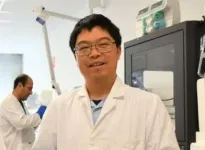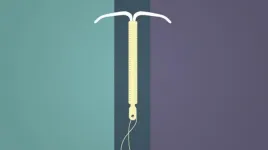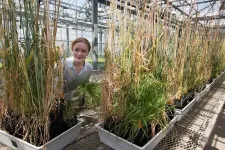The opportunities and risks of digitalization for sustainable development
A systemic focus on risks and benefits of digital technologies
2021-04-07
(Press-News.org) Digitalisation can support transitions towards a more sustainable society if technologies and processes are designed in line with suitable criteria. This requires a systemic focus on the risks and benefits of digital technologies across the three dimensions of sustainable development: the environment, society, and the economy. This is the conclusion of a study prepared by a team of researchers at the Institute for Advanced Sustainability Studies (IASS) in Potsdam. Applying this precautionary approach to digitalisation requires the active involvement of developers, users, and regulators.
Digitalisation is a complex and dynamic process often regarded as the fourth major innovation cycle in human history. The use of a systemic risk-benefit perspective could shed light on the links and interdependencies between digital technologies and the environmental, economic, and social dimensions of sustainability, emphasise the team of researchers at the IASS.
The flexibility of digital services creates important opportunities for efforts to achieve sustainability goals. However, this can also lead to path dependencies that are difficult to reverse or otherwise correct unless they are discovered at an early stage. These closely intertwined opportunities and risks call for informed and judicious decision-making in order to foster sustainable development.
Digital innovations will not deliver the 17 UN Sustainable Development Goals (SDGs) as a matter of course; instead, the development of digital innovations must be guided by:
a systemic perspective that acknowledges the connections and interdependencies between their environmental, economic and socio-cultural impacts,
a professional technology assessment informed by interdisciplinary insights, and
an inclusive decision-making style that facilitates broad participation in the development of digital services.
Digital products help reduce demand for energy and raw materials
What else will it take to foster more sustainable outcomes? Co-author and research group leader at the IASS, Pia-Johanna Schweizer, explains: "Ensuring that all sectors of society have access to digital media and possess the digital literacy needed to use them is vital to delivering an inclusive digital transformation. We also need fast and reliable Internet access nationwide - including in rural areas." Similarly, targeted support is needed for small and medium-sized enterprises as they modernize their processes.
The development of digital products and production processes that reduce energy and material demand are also important building blocks for a sustainable digital future, says co-author Grischa Beier. As Pia-Johanna Schweizer explains "Above all, it is crucial to establish clear rules for data security and data sovereignty. If these challenges are not adequately addressed, acceptance of digital innovations is likely to erode and efforts towards a sustainable digitalisation process may be jeopardized."
Finally, new societal initiatives are needed to help shape an enabling environment for the development of sustainable digital technologies and services. The three authors recommend a participatory process in which stakeholders co-design the objectives, rules and regulations for a governance structure that engages with the Sustainable Development Goals of the United Nations.
INFORMATION:
Visit also the DiDaT project website: https://www.iass-potsdam.de/de/forschung/didat
Publication:
Ortwin Renn, Grischa Beier, Pia-Johanna Schweizer: The opportunities and risks of digitalisation for sustainable development: a systemic perspective, GAIA 30/1 (2021). DOI:
https://doi.org/10.14512/gaia.30.1.6
Author contact:
Dr. Grischa Beier
Research Group Leader for Digitalisation & Sustainability
grischa.beier@iass-potsdam.de
Dr. Pia-Johanna Schweizer
Research Group Leader for Systemic Risks
Pia-Johanna.Schweizer@iass-potsdam.de
ELSE PRESS RELEASES FROM THIS DATE:
2021-04-07
ALS is a progressive neurological disease that attacks the nerves that interact with the body's muscles. The disease typically leads to complete paralysis of the body, robbing patients of their ability to walk, speak, eat and breathe.
Researchers studied ALS patients and healthy elderly volunteers living in Malta who took part in an ongoing study aiming at identifying genetic and environmental risk factors. Malta is a sovereign microstate in the middle of the Mediterranean Sea, and is home to a geographically and culturally isolated population. Recently, Maltese ALS patients were found to have a unique genetic makeup compared to ...
2021-04-07
Bishop Peder Winstrup died in 1679, and is one of the most well-preserved human bodies from the 1600s. Researchers at Lund University in Sweden may now have solved the mystery of why a foetus was hidden in his coffin in Lund Cathedral. DNA from the bishop and the foetus, along with kinship analyses, has shown that the child was probably the bishop's own grandson.
Something is protruding between Bishop Peder Winstrup's two calves. The X-ray reveals small bones. Could it be an animal? When the image is studied more closely, the osteologists from Lund University can see faint signs of what is to become ...
2021-04-07
A novel way to pinpoint and illuminate bone damage promises to make X-rays more efficient at diagnosing bone and other injuries, Flinders University researchers say.
The new technique, looking at potential biomedical applications of an ancient inorganic salt-based aggregation induced emission (AIE) radio-luminescence material, could open new frontiers in medicine including X-ray dosimetry, bioimaging and advanced applications such as optogenetics, says Professor Youhong Tang, from Flinders University's College of Science and Engineering.
The review article, published by Professor Tang, postdoctoral student Dr Javad Tavokoli, colleagues in Hong Kong and Australian technology company Micro-X and, examined the potential of the AIEgen luminogens ...
2021-04-07
Sweden's acclaimed research on uterine transplants has taken a new step forward: into the field of health economics. Now, for the first time, there is a scientifically based estimate of how much implementing the treatment costs.
The current research is based on the nine uterine transplants from living donors carried out in 2013, under the leadership of Mats Brännström, Professor of Obstetrics and Gynecology at Sahlgrenska Academy, University of Gothenburg, and Chief Physician at Sahlgrenska University Hospital.
The transplants were performed within the scope of the world's first systematic, scientifically based study in the field. After ...
2021-04-07
If relatives of people with mental illness become better at accepting the difficult emotions and life events they experience - which is what training in compassion is about - their anxiety, depression and stress is reduced. These are the results of a new study from the Danish Center for Mindfulness at Aarhus University.
Being a relative of a person with a mental illness can be very burdensome. It can feel like a great responsibility, and many people struggle with feelings of fear, guilt, shame and anger. A new study from the Danish Center for Mindfulness shows that eight weeks of training in compassion can significantly improve the well-being of relatives.
Compassion is a human quality that is anchored in the recognition of and desire to relieve ...
2021-04-07
Tsukuba, Japan - Dermatomyositis is an idiopathic inflammatory myopathy that has been regarded as an autoimmunity-based disorder, although its pathogenesis remains unclear. In this study, researchers from the University of Tsukuba used a mouse model to identify a mechanism by which dermatomyositis may develop in humans. The animal model and findings can be used to better understand the disease and develop disease-specific treatments.
Dermatomyositis belongs to a group of idiopathic inflammatory myopathies that are associated with the presence of specific autoantibodies in patient sera. Multiple myositis-specific autoantibodies, which target proteins ubiquitously expressed in the nucleus or cytoplasm, have been described. One ...
2021-04-07
A team of scientists led by Nanyang Technological University, Singapore (NTU Singapore) has created a reusable, biodegradable sponge that can readily soak up oil and other organic solvents from contaminated water sources, making it a promising alternative for tackling marine oil spills.
Made of sunflower pollen, the sponge is hydrophobic - it repels water - thanks to a coat of natural fatty acid on the sponge. In lab experiments, the scientists showed the sponge's ability to absorb oil contaminants of various densities, such as gasoline and motor oil, ...
2021-04-07
Astronomers have found two close pairs of quasars in the distant Universe. Follow-up observations with Gemini North spectroscopically resolved one of the distant quasar pairs, after their discovery with the Hubble Space Telescope and Gaia spacecraft. These quasars are closer together than any pair of quasars found so far away, providing strong evidence for the existence of supermassive black hole pairs as well as crucial insight into galaxy mergers in the early Universe.
The quasars in each of the two pairs are separated by just over 10,000 light-years, suggesting ...
2021-04-07
Getting a birth control implant used to cost some women hundreds of dollars, if they were among the nearly half of privately insured Americans covered by a health plan with a high deductible that they were responsible for paying.
But a new study in the April issue of Health Affairs shows that after the Affordable Care Act's no-cost birth control provision took effect in 2013, women in these high-deductible health plans (HDHPs) opted for long-acting contraception even more than women with other types of health plans.
The study's findings have important policy implications, because employers now have the ability to opt out of the birth control portion of the ACA, following a Supreme Court case decided in 2020. Many employers have shifted to HDHPs to hold down their overall health ...
2021-04-07
Stem rust is a devastating disease of cereal crops, including barley, one of the first domesticated crops in agriculture and the fourth most widely grown crop in the world. Barley is unique because it is one of only a few crops that can be cultivated in almost any climate and across a range of elevations, making it economically and nutritionally important.
Stem rust is one of the biggest threats to barley production and capable of causing complete crop loss during severe epidemics. And since barley is also used as malt for beer and spirits and feed for animals ...
LAST 30 PRESS RELEASES:
[Press-News.org] The opportunities and risks of digitalization for sustainable development
A systemic focus on risks and benefits of digital technologies




